It starts with breakfast with McDonalds
lucky for us, today is a STAT holiday and so all the streets
are empty and we left Munich behind us fairly easy. And were on the way through
the Bavarian Countryside. But that also means that bakeries for breakfast are
closed. Backupplan: we stopped at a McDonalds – where we got told
they won't sell us the yummy Muffins at the moment – only breakfast muffins...
but we had super great coffee...
Also for us very interesting was to see all the solar panels
…. Thousands of them: get here they are really in alternative energy…
Walhalla
if you never came here it is a must see – crossing the Danube
River we could see that Greek temple up in the hill... Then Paul speeding into
the parking lot that the lady complaint, because yes you have to pay first.
Up some stairs and there we are in front on this Akropolis
temple – walking underneath the columns to the front – where sunshine and an
amazing view greats us was super cool – and the Danube Valley in front of us –
awesome!!!. Gine had to go all the steps down who knows how the view is from down
there – and then up again... we had quick sneak peak inside but decided we are
not so interested in seeing each individual bust... so we were sitting in the
sun and enjoying the view and we are feeling like we are on vacation!!!
And when we left we were 25 Minutes ahead of schedule!!!!!!
Why do we have a greek Akropolis temple in Bavaria?
- they say it is one of Germany's most important national monuments of the 19th century – but guess I haven't heard of it before
- it got built by the Bavarian Kind Ludwig I – after a defeat by the Napoleon army in 1807
- He promised that when he became king he will built a monument in remembrance of the German-speaking men and women of outstanding merit as an inspiration: along the walls inside are busts of memorial plagues of Walhalla comrades chosen by Ludwig I: a mix of rulers, generals, artists and scientists which are all considered as an example in the 19th century – since 1962 some new busts got added (as by a decision of the Bavarian Council of Ministers) – I only wonder why I'm not here, since I'm Paul’s biggest inspiration, maybe because I'm not Bavarian (?)
- it opened in 1842 and it got inspired by the Acropolis in Athens
Concentration Camp Flossenbuerg
as we drive towards the Czech Republic – a few km before the
border is a sign: KZ Flossenbuerg: Gine said to Paul do you know that? Paul
said yes and since we are ahead of time, we decide to make a stop: so it was
quite a detour since we had 25 km winding road through meadows and forests
ahead of us and then we were ending up in the little town of Flossenbuerg.
We walked underneath the old SS headquarters and then towards
the Camp gate: the posts are new
(the old gate got moved to be near the Crematorium. When you look around you
see where the barracks were and when you look closely up the hill you can see
that the houses there are built on the terraces where in the old days the
barracks were – today they overlook the camp. (I wonder how it was for the
people who started building after the war on the former camp barrack ground –
must be weird)
The Exhibition: After walking over the roll call
ground we came to the old Laundry building with an exhibit of the camp – where
we learned a little bit more about the camp as well in the town of Flossenbuerg.
In the basement we walked through the showers/bathrooms: from 2 of the prisoners we hear what they have to say about their life here:
- One prisoner: We arrived in Jan 1944 with -20 C freezing cold and when we had ashower the guards either made the water on purpose way to hot or way to cold
- Another prisoner arrived in August: it was superhot and we had to walk 4 days around naked in the sun without any protection.
- “Not only did we loose our clothes – but also our soul”
the Prisoners: they had a book with all prisoner names
who came through Floosenbuerg – they had some more information about some of
them in binders on the wall – you could find them under their country or if
they were special prisoners. For most prisoner the decisive question was “How
will I survive one more day” - from here
we also had a glance into a tiny connecting passage underneath the roll-call:
here one of the prisoner was hiding to avoid the death march. Along the walls
you could read some stories of individuals who came through here… and all what
you would like to do is read about each and everyone who suffered coming
through here…. The pictures and stories make the numbers become real people
again, because during the camp times the people became numbers – very sobering.
- “It’s impossible to imagine what it’s like when you lived in fear for your life for months on end. We had to reckon that the next SS guard just shooting us.
Detention barracks: only a small part is left where
you can walk in the cell
guard towers: all over we saw 3 of them still standing
Cemetery of honour: was a big area with plants and
some grave stones with no names on the them and then we went steps down to the
Crematorium: inside you could see one oven as well the
autopsy room – right near it was a ground where a lot of mass shootings took
place
Valley of the death:
or “Tal des Todes” - here the SS did the executions and the burning of the
bodies. The ashes of 15.000 people is buried
in here. You can see the: Pyramid of ashes (made of earth and ashes as a marker for all the once who perished in
this camp) and the Square of the nations: for each nation they
had a large gravestone and you could see on how many prisoners came from each country
to work here. With some memorial stones – it was kind of sombering being down
in that valley – maybe because it was in a valley and it was like no escape
coming out? And also then the spot for the crematorium – ashes and nowadays the
memorial stones.
Chapel: and again this was built in memory of all the
prisoners who died here – unlike in other chapels here the windows have the
country’s and number of victims.. and on the walls flags/coat of arms with
number of victims…
The Quarry: and what did we miss: it was 2.30 once we came
back to the car and thought you have to walk all the way to the quarry which
would be a little bit too much.... so we missed the view point, but we did saw
pictures of it. And did I mention, that the whole town was full with granite
stones
What did we learn about Flossenbuerg concentration
camp:
- the town of Flossenbuerg has a huge quarry where they get Granite stones - during WWII some of the town tried to convince the SS how great they are, and they got there concentration camp built here: it was no secret and in full view
- it was a forced labour camp from 1938- 1945 to work in the nearby quarries– with 12 hour work day and one short meal break – if you had an accident with dynamite they were afterwards punished because it was there fault
- in 1942 it became an armament production site and the assembled air craft parts for the Messerschmidt company
- overall 100.000 prisoners (84.000 men and 16.000 women) were here and around of them 30.000 died. 20.000 of them were polish - Nazi's regarded polish as racially inferior
- Mortal fear characterized everyday life in camp. Tens of thousands died agonizing death: starvation, froze to death, succumbed to disease, many were randomly beaten or shot to death, others were victims of targeted execution operations
- The behaviour of the SS toward the dead and dying was cynical and dehumanizing. The dead were abandoned for their fate and the bodies of the dead treated like waste
- in the mid 1944s the SS began to evacuate camps in occupied Europe and massive prisoner transports arrived mainly from Gross-Rosen, Ausschwitz and Plaszow camps to Flossenbuerg which resulted in overcrowding, another 3000 arrived after the Warsaw uprising
- in 1943 the main camp had 3300 prisoners and a year later 8000 and on March 1, 1945 15.455: they have still all the old books there on display where you can see, that each prisoner got a number – when you see all the books and how many that are, that is when the numbers make you realize on how many were here
- each of the barracks held 1500 prisoners – prisoners unable to work were moved into the death barracks 22 & 23
- most died during the winter of 1944 due to starvation, disease and exhaustion: around 25.000
- when the US liberated it on April 23, 1945 they found only 1500 critically ill and malnourished prisoners – the majority had departed on death marches: to erase traces of their murderous activities beginning of Mid-April the SS started to evacuate over 40.000 prisoners to the south as far as Dachau – some guards killed entire groups of prisoners, in many areas the dead were left behind
- in 1946 they established a memorial site
Real people:
- Josef Tacikowski was 16 years old when he arrived here in Oct, 1944 and became the number 31863 with his older brother # 31862. His brother died at a sub camp. Josef thinking of seeing his brother again preserved his will of surviving. in 1945 he injured his left foot and got later infected and required amputation. After more surgery after liberation in Regensburg he returned in 1946 to Poland.
- Tadeusz Sobolwicz: was part of the resistance as a messenger, the 16 year old got arrested in Sept 1941. Via Auschwitz and Buchenau he arrived in a subcamp. Soviet Prisoners revolelted in the subcamp in April 1944 and a fire broke out, Tadeusz suffered severe burns and came to Flossenburg main camp to die, but a polish prisoner cared secretly for him and he survived. in March 1945 the SS transferred him to Regensburg, while on the death march he escaped and hid in a barn. His father died in Ausschwitz and he returned to Poland to his mother who also survived the concentration camp
- Julian Nogan: was send by the Germans from Poland to a farm in Linz to work there. he fell in love with the farmer's daughter Frieda. But relations between forced labour and Germans were forbidden. Frieda was sent to Ravensbrueck and Julian to Flossenburg. on April 20, 1945 he went on the Death march towards Dachau, he helped to carry other inmate who couldn't walk, but had to leave him behind and he heard the shots as the SS shot him. After the war he returned to Austria and married Frieda who also survived and together they emigrated to the US.
- Celina: was a chemist, after the Warsaw uprising in Aug 1944, the 22 year old was sent to Ausschwitz and in October got transferred to Flossenburg. After a bombing in April 1945, she hit in the basement and was spared the death march. After liberation she met Tadeusz another camp survivor and they moved to Poland.
Dietrich Bonhoeffer – one of the Special Prisoners:
- born in 1906 in Brelsau, he was a pastor and a key member of the founding of the Confessing Church (Bekennende Kirche)
- he also was known for it’s resistance to the Nazis and his vocal opposition against Hitlers Euthanasia program and persecution of the jews: 2 days after Hitler got Chancellor he attacked Hitler on the radio and warned Germans against slipping into following the Fuehrer who could become a Verfuehrer (mis-leader)
- He had a twin sister, one of his brothers died in WWI, one was involved in Hitlers assassination and got killed with Dietrich
- he was arrested in April 1943 by the Gestapo – was in Tegel prison for 1,5 years, accused being involved with the assassination was transferred in to Buchenwald and then to Flossenbuerg as a special prisoners
- trialed on April 8 without any witness – he was hanged on April 9, 1945 when the Nazi regime was collapsing
- “Silence in the face of evil is evil itself” – “Not to speak is to speak. Not to act is to act”
- “Being a Christian is less about cautiously avoiding sin than about couragely and actively doing God’s will”
- “the biggest mistake you can make in your life is to be always afraid of making a mistake”
- “We must be ready to allow ourselves to be interrupted by God”
- "In me there is darkness, BUT with YOU there is light; I am lonely, BUT YOU do not leave me; I am feeble in heart, BUT with YOU there is help; I am restless, BUT with YOU there is peace; in me there is bitterness, BUT with YOU there is patience; I do not understand your ways, BUT YOU know the way for me" - "Lord Jesus Christ, you were poor and in distress, a captive and forsaken as I am. You know all man's troubles. you abide with me when all men fail me, you remember and seek me, it is your will I should know and turn to you. Lord I hear your call and follow; Help me"
- Von guten Mächten treu und still umgeben, behütet und getröstet wunderbar, so will ich diese Tage mit euch leben, und mit euch gehen in ein neues Jahr.
- Noch will das alte unsre Herzen quälen, noch drückt uns böser Tage schwere Last. Ach Herr, gib unsern aufgeschreckten Seelen, das Heil, für das Du uns geschaffen hast.
- Und reichst Du uns den schweren Kelch, den bittern, des Leids, gefüllt bis an den höchsten Rand, so nehmen wir ihn dankbar ohne Zittern aus Deiner guten und geliebten Hand.
- Doch willst Du uns noch einmal Freude schenken, an dieser Welt und ihrer Sonne Glanz, dann woll'n wir des Vergangenen gedenken, und dann gehört Dir unser Leben ganz.
- Laß warm und hell die Kerzen heute flammen, die Du in unsre Dunkelheit gebracht, führ, wenn es sein kann, wieder uns zusammen! Wir wissen es, Dein Licht scheint in der Nacht.
- Wenn sich die Stille nun tief um uns breitet, so laß uns hören jenen vollen Klang der Welt, die unsichtbar sich um uns weitet, all Deiner Kinder hohen Lobgesang.
- Von guten Mächten wunderbar geborgen erwarten wir getrost, was kommen mag. Gott ist bei uns am Abend und am Morgen und ganz gewiß an jedem neuen Tag.
Welcome to the Czech Republic
we crossed the border and you need a Vignette so we stopped
at the first gas station and were standing in a long line up... then we were
lucky to even find a parking stop and when leaving we were standing in another
car lineup – since one truck was on the wrong side of the road – really....
Welcome to the Czech Republic
Karlstejn Castle – where are you?
This famous castle is on the road, so yes we plan to stop...
even we are tight on time... but guess google map didn't know the way: because
we drove tiny little streets through the Czech country side and ended up in a
dead road in a forest with no castle in site... what we did see on the way
there was a huge airplane which looked like it was converted to a house... yes
you see something you should stop right away and not on the way back (because
maybe you do not come back here) – and then Google send us even through smaller
towns and narrower roads and we had no clue were we are....
Google was not perfect – but we still would be lost without
it!! And we did arrive!

 Donaustauf, Bayern, Germany
Donaustauf, Bayern, Germany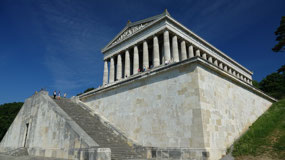
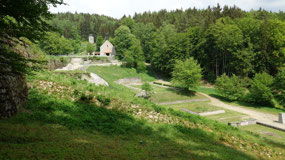
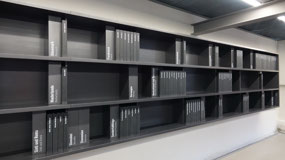




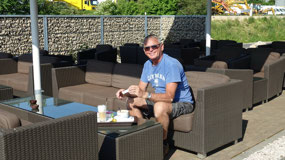
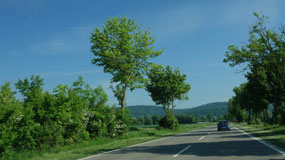
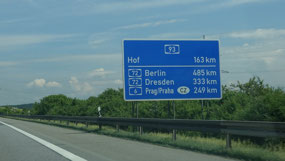
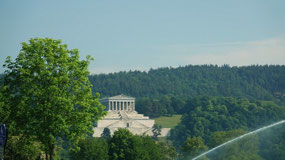
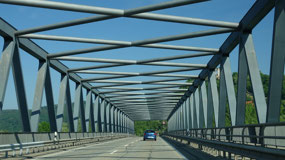
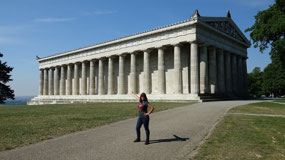
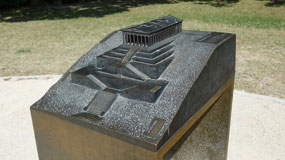
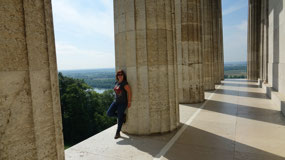
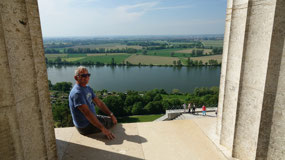
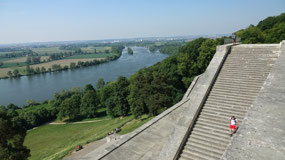
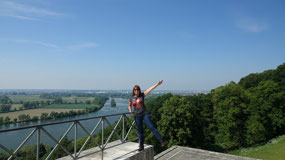
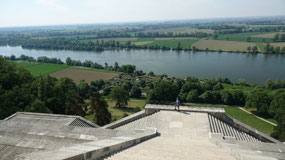
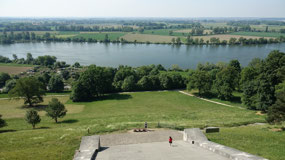
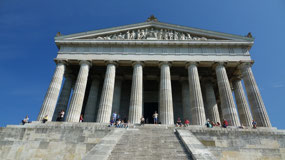
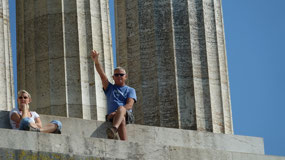
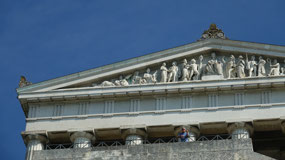
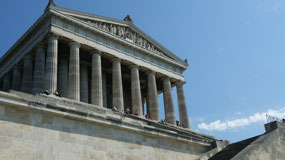
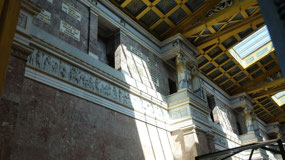
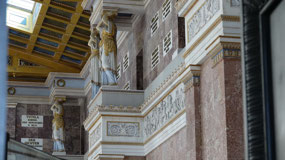
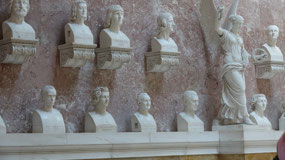
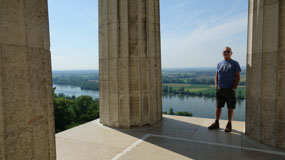
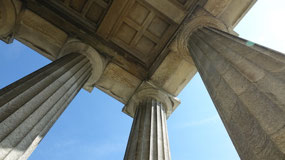
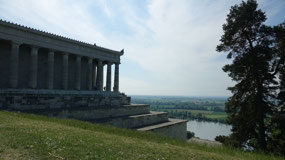
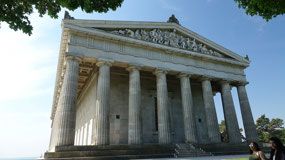
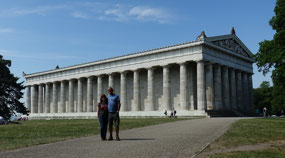
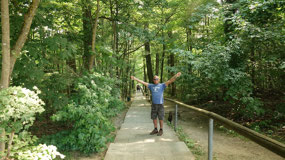
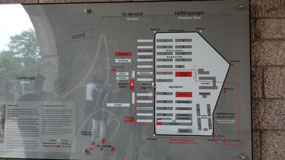
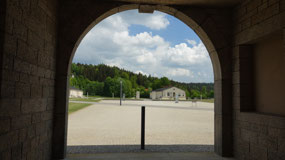
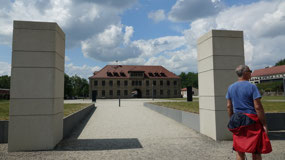
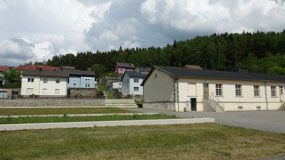
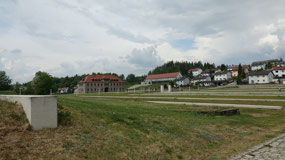
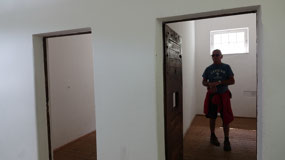

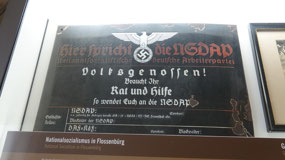

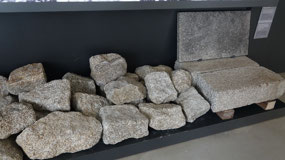
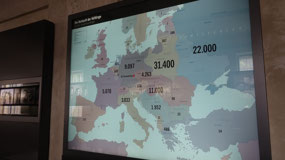
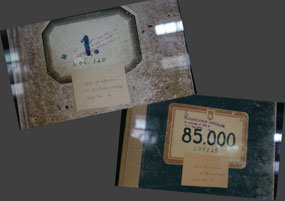
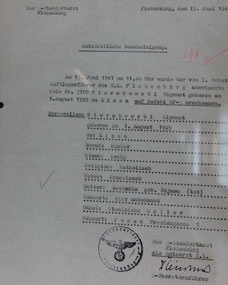
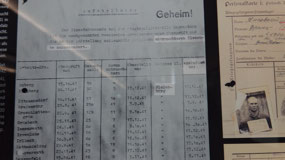


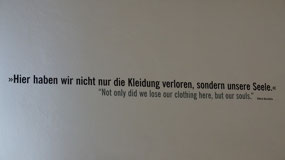
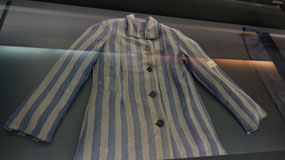
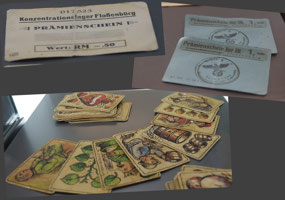
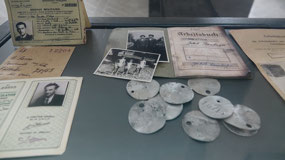
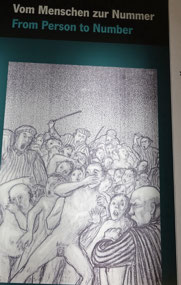
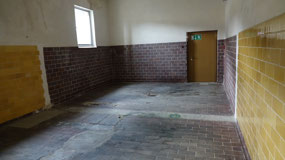
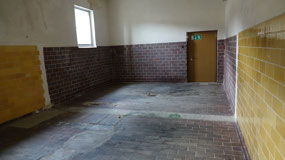
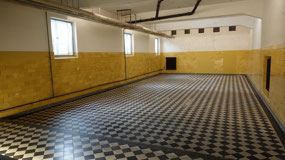

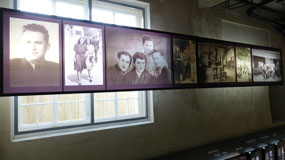
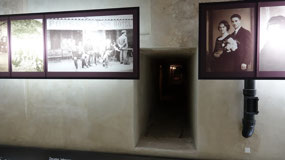
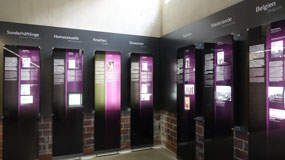
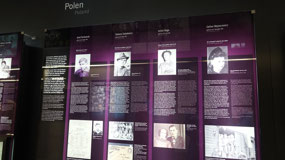
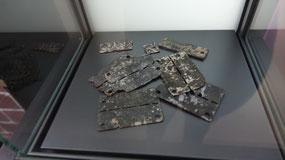
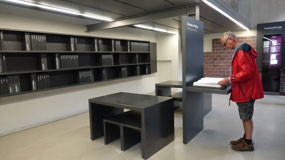
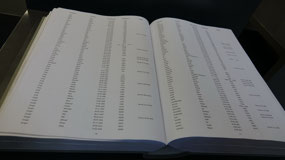
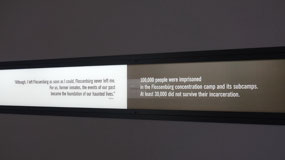
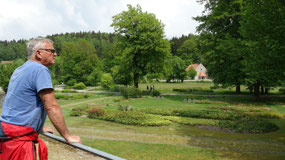
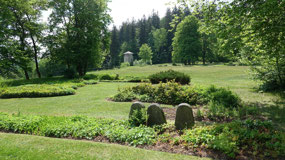
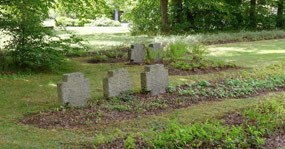
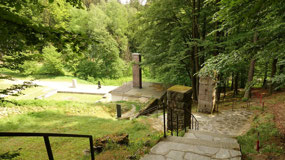
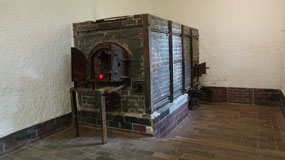
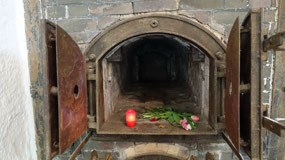
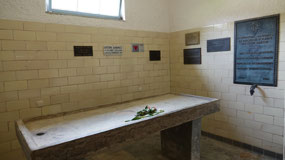
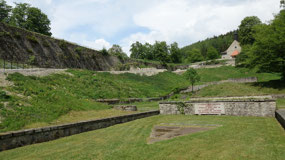
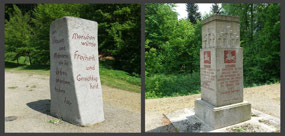
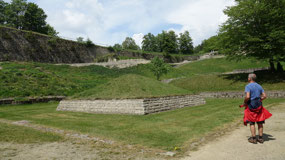

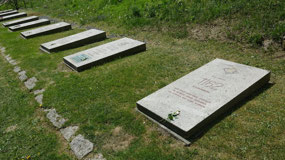

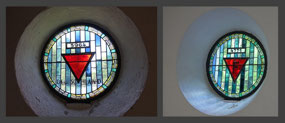
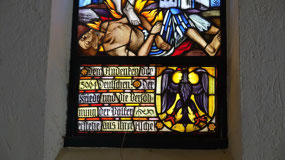
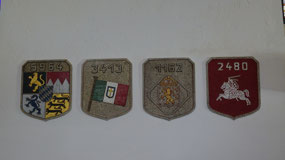
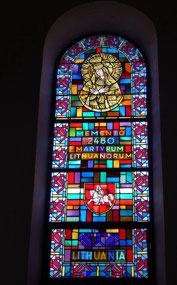
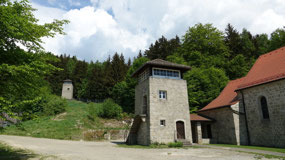
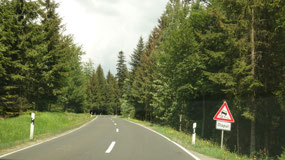
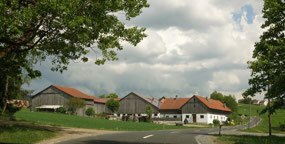
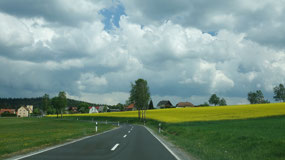
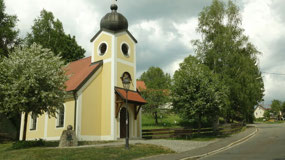
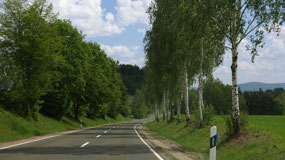

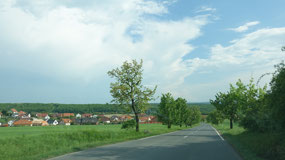
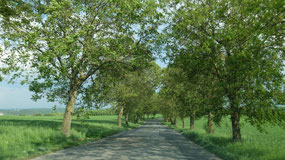
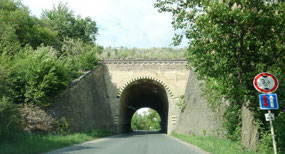
2025-05-23